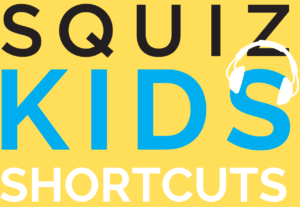
Your Shortcut to… Climate Change and COP28
Comprehension Activities
Your shortcut to… Climate Change and COP28
LINKS:
Classroom Resource 1 – All About Acronyms: https://www.squizkids.com.au/wp-content/uploads/2023/11/Climate-Change-Shortcut_ACRONYMS.pdf
Classroom Resource 2 – Climate Tree: https://www.squizkids.com.au/wp-content/uploads/2023/11/Climate-Change-Shortcut_TREE-OF-CHANGE.pdf
Other COP28 Teaching Resources: https://www.bbc.co.uk/teach/un-climate-change-conference-teaching-resources/zrcg3j6
EPISODE TRANSCRIPT
It’s all about heat and gas… It’s bringing 70 thousand people together this week …and it could affect life as we know it. This is your Squiz Kids Shortcut to Climate Change—the podcast where we dive into the who, what, when, where, why and how of the big news stories. I’m Christie Kijurina.
And I’m Bryce Corbett.
Lately on Squiz Kids, we’ve heard a lot about climate change, as well as how climate change is affecting the number of heatwaves, floods, and bushfires the world’s experiencing.
Today, we’ll take you through WHAT climate actually is, HOW it’s changing, WHY scientists are worried, and WHAT kids can do.
Listen carefully – there’s a Squiz at the end!
WHAT?
Bryce, the news—and science classrooms—are absolutely full of references to climate change. This week you’re going to hear lots in the news about something called a COP in Dubai … it doesn’t mean a policeman in the Middle East – but rather a big meeting between countries of the world to talk about finding solutions to climate change. But to understand how the climate is changing, we have to have understand what climate actually is.
Doesn’t it just mean weather? Like, the tropical climate of Queensland is beautiful one day, perfect the next?
Well, weather is what happens each day. Climate is the average weather in a place over many years. Anyone who lives in Melbourne knows that the weather can change in a few hours, but it takes the climate years to change.
Okay, so what makes the climate?
One really important part of our climate is determined by energy from the Sun. Most of the sun’s heat is bounced right back into space, off the Earth’s atmosphere, as well as off clouds, and ice, water, and land. Another part of the sun’s heat is absorbed by the earth, allowing plants to grow. And then some of the sun’s heat is captured by gases in our atmosphere.
(fart noise)
Not that kind of gas! The sun’s energy is trapped by what’s called ‘greenhouse gases’—carbon dioxide and methane especially. Basically, the sun’s heat was going to escape Earth (wheee), but it’s caught by those gases, in something called the ‘greenhouse effect.’ (gotcha!)
And that’s a bad thing?
Definitely not! Without the greenhouse effect, earth would be 33 degrees cooler (teeth chattering sound effect), and way too cold for humans to live here. The greenhouse effect makes earth habitable. And that was the delicate balance that made life on Earth possible for many millions of years. BUT … if the amount of greenhouse gases increases – as has happened in the last 100 years or so – then the greenhouse effect can get stronger, and things can get hotter.
Aha! So is that HOW our climate is changing?
HOW?
Well, it’s important to note that Earth’s climate has been changing for billions of years. There have been times when it was cooler …
like the Ice Age
and times when it was warmer. But for about the last 8,000 years, it stayed pretty much the same, until… the Industrial Revolution.
You’ll probably only learn about that once you get to high school, but the Industrial Revolution started in the 1800s, and it was when the world began to shift away from most people working on farms, to working in big factories and using machines.
That big change to the way we live has upset the balance of greenhouse gases. Basically, we’re adding more gases to the atmosphere than our environment is able to absorb.
And that means it’s getting hotter.
It does. 2023 is on track to be the world’s warmest since the 1850s when we started measuring. Our oceans are getting hotter as well.
Which must have an effect on plants and animals that live in the oceans and on land. Is that WHY scientists and governments are worried?
WHY?
Bryce, scientists are telling us that climate change, if it continues the way it’s been going, will affect human health, farming, water supply, plants and animals… not to mention an increase in bushfires, floods, heatwaves which we’re already starting to see…
And just about every country in the world has agreed that we need to do something, right?
In 2015, there was a big meeting in Paris where the leaders of 185 countries all signed an agreement to work together to reduce those greenhouse gas emissions. And since then, research has shown we need to go harder and get to something called “net zero emissions” by 2050
Net zero sounds like a basketball game that went wrong …
I know you’re nothing but net, Bryce. (SWOOSH) But in the emissions game, net zero is a good thing. Step one is reducing the greenhouse emissions we put out. To do that, governments and businesses are working to reduce emissions from cars that use petrol by putting more electric cars on the road. And some are shifting from power plants that burn coal to produce electricity, to getting electricity from solar and wind power. Solar power is energy that comes from the sun.
So governments want to get to ZERO greenhouse gases by 2050?
No… they know that’s not realistic. That’s where the ‘net’ comes in. It means that the amount of greenhouse gas emissions you take out of the atmosphere is equal to the amount you emit… so that the effect on the atmosphere is zero.
Aha, net zero… How do you take gases out of the atmosphere?
Well, trees have been doing it forever. A natural part of photosynthesis, which you might have learned about at school already, is capturing and storing carbon dioxide. So if you plant more trees, you trap more gas.
At the COP26 climate conference in Glasgow in 2021, governments agreed to stop deforestation, or chopping down forests for farmland. That should help.
For sure. And scientists are hard at work developing brand new technologies to help the trees trap carbon dioxide. They’re looking for ways to scrub gases from the sky; store them in plants in the ocean; and other nifty ideas. The race is on…
That’s why this year’s COP28, to be held in Dubai this week, the most populous city in the United Arab Emirates (or UAE for short), is such an important event. It’ll be the 28th time this annual meeting has taken place. So these are all important things for governments and scientists to be focusing on. But WHAT can kids do?
WHAT?
Well Bryce, young people are involved in the COP meetings. There’s a youth COP held just before the main event, which sends recommendations and submissions to the main meeting.
Yes, I know there’s a Youth Climate Champion – a young person who attends the event as a representative of youth around the world. Their job is to ensure the meaningful participation and representation of youth in international climate decision-making. But wait, what is a COP, exactly?
CLASSROOM RESOURCE NOISE
A COP, Bryce is an acronym. Acronyms are abbreviations formed by the first letters in a series of words. So USA is an acronym for United States of America. Your first classroom resource will be to explore some really common acronyms, and then design one for your class. It’ll be fun. As for COP…
It stands for the Conference of the Parties, which is a boring name if ever I’ve heard one, and its been happening every year for 28 years, as part of the United Nations’ convention on climate change. About 70,000 people will be attending this year. Not just governments, but activists, religious groups, and other organisations.
Hang on … what’s the United Nations?
Ah – good question. It was created back in 1945, after the world had been through two really terrible wars. The idea was to create a place where countries could work out their differences and band together to make the world a better place for all of its 8 billion inhabitants to live.
Okay, so the UN is listening to young people’s voices at the meeting in Dubai – but what can kids do at home or at school each day?
CLASSROOM RESOURCE NOISE
That brings us to our second classroom resource. You’ll read about some of the ways that kids can help, and decide on ONE that you could do. You’ll write it onto a leaf, which you’ll decorate, and then create a class Climate Tree with all those leaves. It’ll look beautiful.
I’d say there are three main categories of things kids can do. The first is to save energy: turn off lights when you leave a room, take short showers, bike, walk, or take public transport instead of asking for a lift… The second is to use your amazing powers of persuasion.
Ah, yes. My kids are very convincing about the need to buy chips and lollies… (pause for “pleeeeease Dad?”
They’ve been talking to my kids! If you can convince your parents to get chips, you can also try to convince them to switch to using energy saving light bulbs, or a car that uses less petrol… help them recycle each week… remind them to use the “energy saving” mode on the dishwasher and washing machine.
And the third thing?
Well, the world needs people who can solve climate challenges. If you work hard at school you can work towards a green career, doing anything from inventing better ways of trapping greenhouse gases, to planning or planting drought-tolerant gardens, to fixing wind energy turbines.
Or pursuing one of the thousands of green careers that haven’t been invented yet.
Exactly
This is the part of the podcast where you get to test how well you’ve been listening… Question 1 What kind of revolution was it that led to more greenhouse gases in the atmosphere? (Industrial)
Question 2 Where is this year’s COP 28 conference being held? (Dubai, The United Arab Emirates)
Question3 How many people are expected to attend COP 28 this year? (70,000)
Now – don’t forget we’ve created a couple of super excellent classroom resources to go with this Shortcut – and you’ll fnd links to those in the episode notes ….. That’s all we have time for today. Thanks for joining us as we explored the who, what, how, where, when, and why of climate change.
Now get out there, and have a most excellent day!
Over and out.
